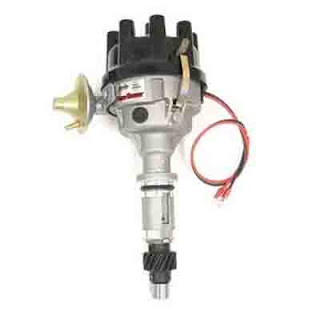Function and Understanding Vacuum Advancer On Ignition Machine
The vacuum advancer function - on ignition systems we recognize ignition timing, ignition timing is the exact time used by spark plugs to splash. Usually the ignition timing of the gasoline engine is at an angle of 8 degrees before the Top dead center.
However, when the timing of ignition has to be advanced and reversed, the reason is when the engine conditions are burdened then the RPM will decrease even if the gas valve is already open. In order for the burning of the engine can take place then the ignition timing must be in reverse for the burning can take place. If staying at 8 degrees could potentially reverse.
For that reason the ignition system is equipped with an advancer used to advance and reverse engine ignition.
The notion of vacum advancer is a special component of conventional ignition used to promote ignition or reverse ignition in accordance with accepted engine load.
Why should I ignore ignition?
This is related to the piston step. Try to imagine, when the engine conditions burdened (when climbing or when carrying heavy loads) then the engine output as if restrained by the weight of the burden borne.
This will make the piston step slower even though we have already stepped on the gas full (meaning the speed also slows down). Currently, the fuel mixture tends to be richer, and if the ignition is maintained at an angle of 8 degrees before the TDC then there is the potential of imperfect ignition.
This imperfect ignition occurs because there are some unburned gasoline molecules or if burned are not simultaneously. The result of course the machine can be brebet to death. To prevent it, the spark plug sparks some degree (not until 09 for gasoline to burn entirely.
How vacuum advancer work is by utilizing the vacuum in Intake manifold, the scheme when the engine is burdened then the gas valve is open but the engine RPM remains low so the vacuum in the small intake. This vacuum is channeled to the membrane on the advancer vacum connected to platinum plate so that the platinum position can be shifted.
When platinum is automatically shifted the ignition timing changes. It is used when the car is in an uphill position or dikala carrying heavy loads where in this case the engine is very drained.
Vacuum advancer construction consists of several components such as;
Membrane, this component is shaped like a layer used to move the advancer shaft based on the pressure difference.
Vacuum chamber, this space is connected with intake manifold through a hose and the pressure inside this space is the same as intake.
Advancer shaft, this shaft is used to move platinum to shift early so that platinum opening can be more early.
Spring, spring is used to restore the position of the shaft to the starting position when the engine load back to normal.
The twin sister of the vacuum advancer is a centrifugal advancer, which can advance ignition based on machine RPM.
Vacum advancer component is quite necessary on conventional machines but now where the gasoline engine has been carrying DLI teknoliogi then this component has been replaced with components that are integrated with electrical components.
So when you look for components vacuum advancer on the cars production over the year 2005 it will be very difficult because at that time the electrical control system began to bloom used in car engines.
Similarly an article about the function and understanding vacum advancer
